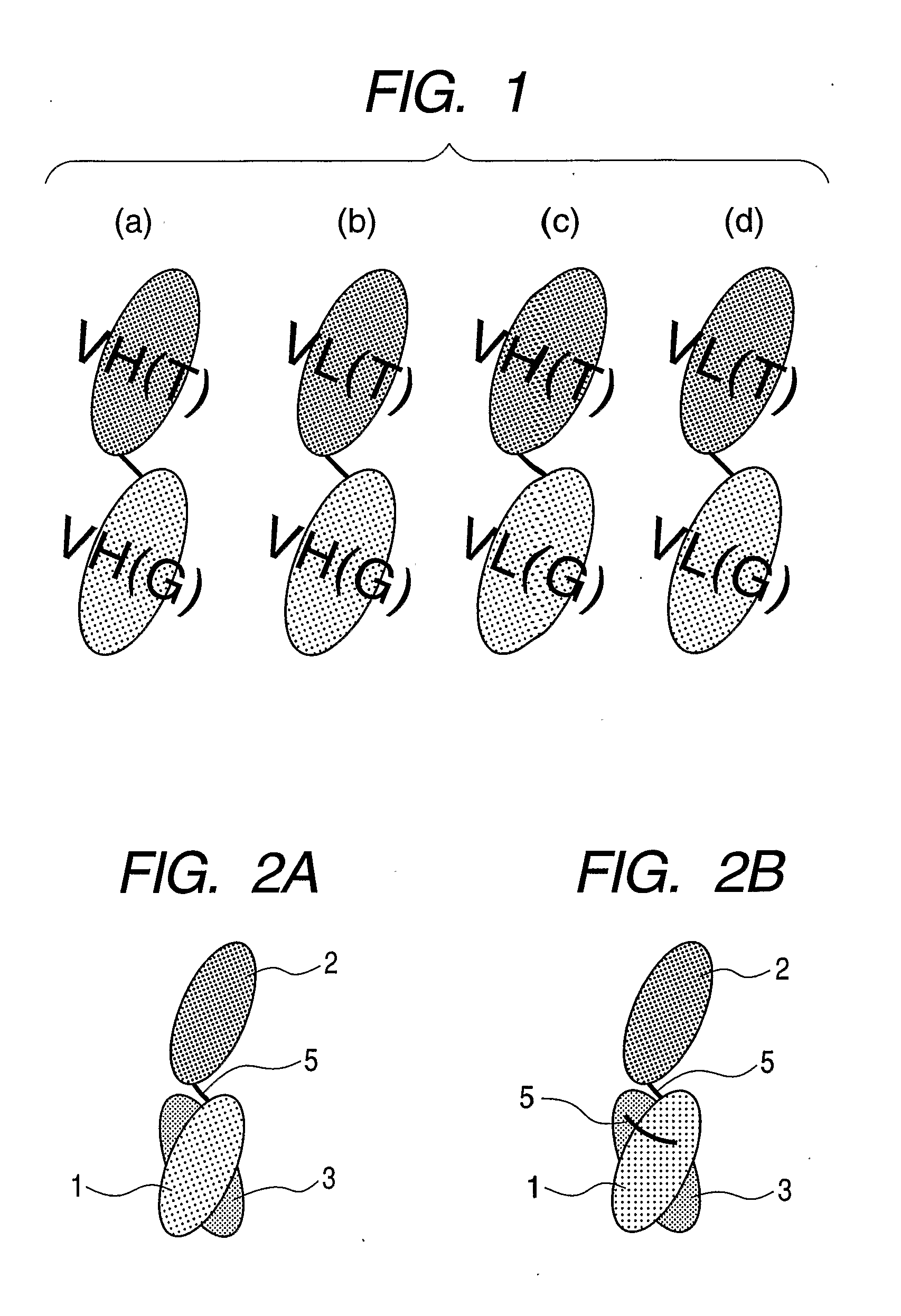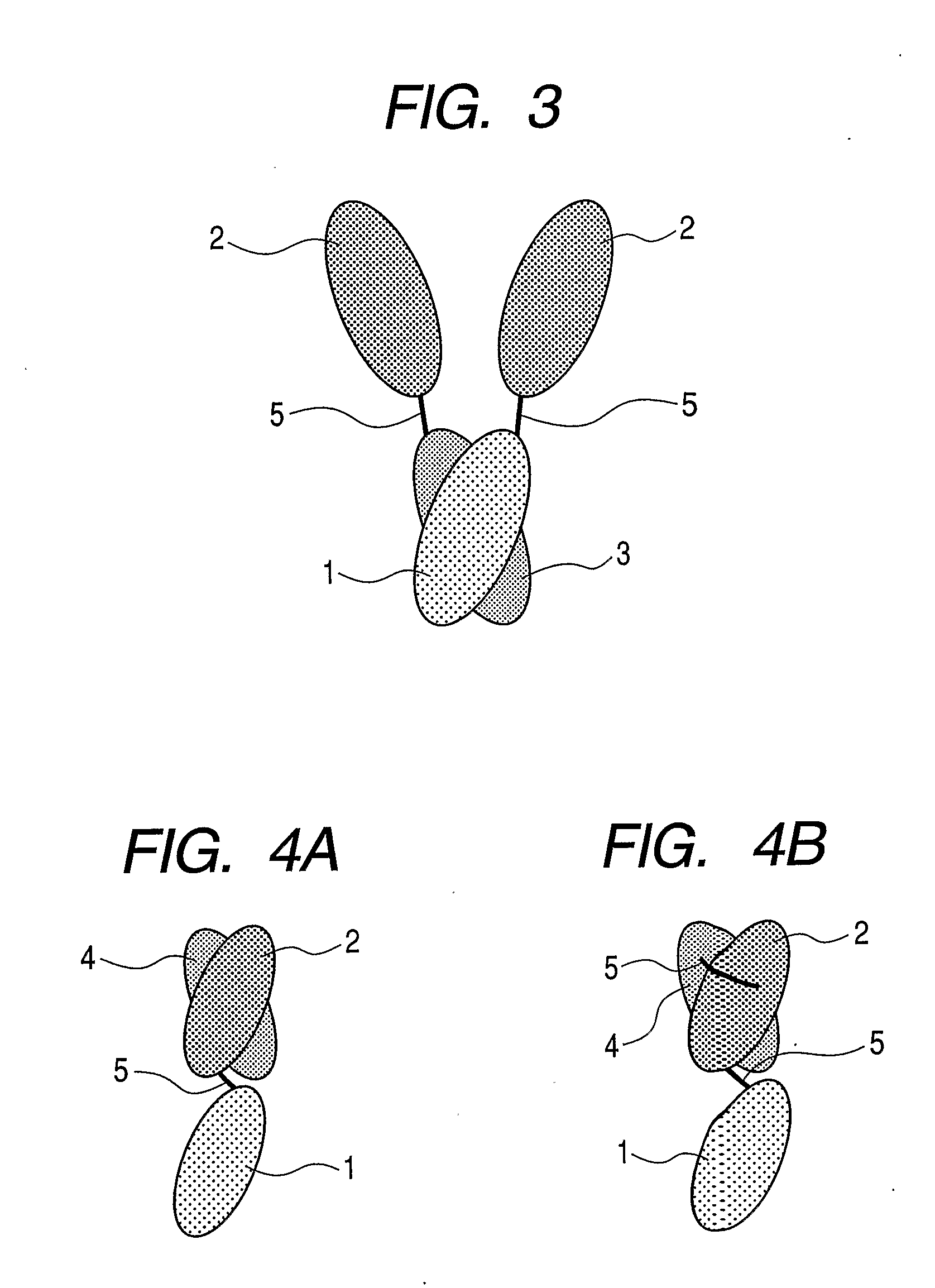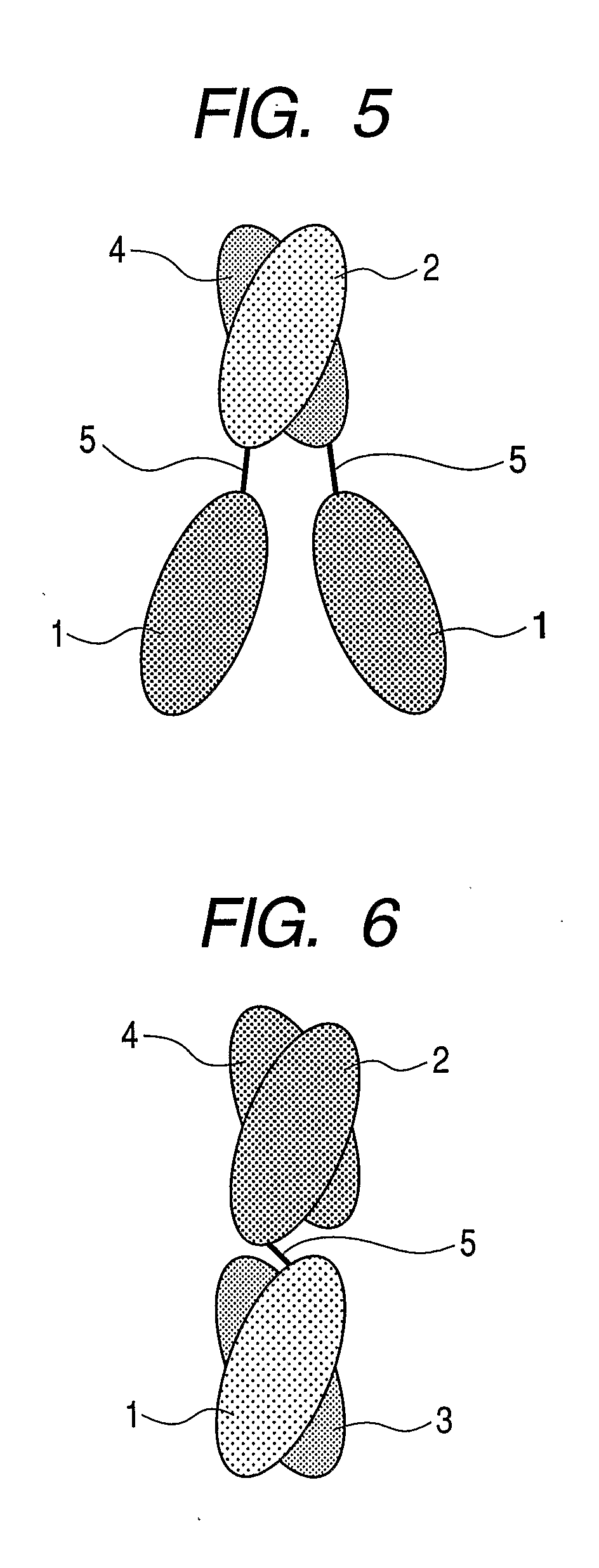Gold-binding protein and use thereof
a technology of gold-binding protein and gold-binding plasmon, which is applied in the field of gold-binding protein, can solve the problems of difficult chemically synthesized compounds, many industrial uses that are difficult to achieve, and functional proteins that combine their higher order structures with desired functions have not been synthesized, etc., and achieve enhanced raman or localized plasmon
- Summary
- Abstract
- Description
- Claims
- Application Information
AI Technical Summary
Benefits of technology
Problems solved by technology
Method used
Image
Examples
example 1 (
Preparation of Antibody Heavy Chain Variable Region VH Library)
[0177] By using a Fab library derived from human adult peripheral blood B lymphocyte as a template, VH coding gene was subjected to DNA replication by means of the following primer in accordance with a method recommended by PCR (TAKARA BIO INC, LA kit). The primer was set as follows.
back primers(SEQ ID No: 78)5′-TCGCAACTGCGGCCCAGCCGGCCATGGCCCAGGTGCAGCTGGTGCAGTCTGG-3′(SEQ ID No: 79)5′-TCGCAACTGCGGCCCAGCCGGCCATGGCCCAGRTYCAGCTGGTGCAGTCTGG-3′(SEQ ID No: 80)5′-TCGCAACTGCGGCCCAGCCGGCCATGGCCCAGSTRCAGCTGCAGSAGTCRGG-3′(SEQ ID No: 81)5′-TCGCAACTGCGGCCCAGCCGGCCATGGCCSARGTGCAGKTGGTGGAGTCTGG-3′(SEQ ID No: 82)5′-TCGCAACTGCGGCCCAGCCGGCCATGGCCCCAGTGTGAGGTGCAGCTGGTGG-3′(SEQ ID No: 83)5′-TCGCAACTGCGGCCCAGCCGGCCATGGCCCAGGTGCAGCTACAGSAGTGGGG-3′forward primers(SEQ ID No: 84)5′-ATTCTCGACTGCTAGCTGAGGAGACGGTGACCAGGGTGCC-3′(SEQ ID No: 85)5′-ATTCTCGACTGCTAGCTGAAGAGACGGTGACCATTGTCCC-3′(SEQ ID No: 86)5′-ATTCTCGACTGCTAGCTGAGGAGACGGTGACCAGGGTTCC-3′...
example 2 (
Screening of Gold-Binding Antibody Heavy Chain Variable Region (VH))
[0191] A 96-well titer plate on which gold (having a thickness of 100 nm) was deposited was prepared as a substrate for screening of a gold-binding antibody heavy chain variable region (VH). 250 μL of 1,000 sample solutions obtained in Example 1 were dispensed in each well, and the plate was gently shaken for 1 hour. After the supernatant had been discarded, the plate was turned upside down and was tapped on paper towel 10 times to remove water. A washing step was performed, which involved: adding 200 μL of Tris+0.1% Tween 20 to each well; and gently shaking the plate for 10 minutes. This operation was repeated 3 times. 200 μL of an antibody solution prepared by diluting an HRP-binding anti-His antibody (Invitrogen) with Tris+0.1% Tween 20 solution at 1:10,000 were dispensed in each well, and the plate was gently shaken for 1 hour. Subsequently, the same operation as the washing step was performed. 100 μL of each of...
example 3 (
Preparation of Antibody Light Chain Variable Region VL Library)
[0194] A VL gene library was prepared from a Fab library of human peripheral blood cells in the same manner as in Example 1. The primers were as follows.
[0195] Back Primer
back primer(SEQ ID No: 89)5′-TCGCAACTGCGGCCCAGCCGGCCATGGCCGMCATYCAGWTGACCCAGTCTCC-3′(SEQ ID No: 90)5′-TCGCAACTGCGGCCCAGCCGGCCATGGCCGATRTTGTGATGACYCAGWCTCC-3′(SEQ ID No: 91)5′-TCGCAACTGCGGCCCAGCCGGCCATGGCCGAAATTGTGWTGACGCAGTCTCC-3′(SEQ ID No: 92)5′-TCGCAACTGCGGCCCAGCCGGCCATGGCCGACATCGWGHTGACCCAGTCTCC-3′forward primer(SEQ ID No: 93)5′-TTCTCGACTTGCGGCCGCACGTTTGATTTCCACCTT GGTCCC-3′(SEQ ID No: 94)5′-TTCTCGACTTGCGGCCGCACGTTTGATCTCCAGCTTGGTCCC-3′(SEQ ID No: 95)5′-TTCTCGACTTGCGGCCGCACGTTTGATATCCACTTT GCTCCC-3′(SEQ ID No: 96)5′-TTCTCGACTTGCGGCCGCACGTTTGATCTCCACCTT GGTCCC-3′(SEQ ID No: 97)5′-TTCTCGACTTGCGGCCGCACGTTTAATCTCCAGTCG TCTCCC-3′
[0196] In addition, a plasmid to be used was similarly prepared except that NheI between NcoI / SacII was changed to NotI at t...
PUM
| Property | Measurement | Unit |
|---|---|---|
| Dissociation constant | aaaaa | aaaaa |
| Affinity | aaaaa | aaaaa |
Abstract
Description
Claims
Application Information
 Login to View More
Login to View More - R&D
- Intellectual Property
- Life Sciences
- Materials
- Tech Scout
- Unparalleled Data Quality
- Higher Quality Content
- 60% Fewer Hallucinations
Browse by: Latest US Patents, China's latest patents, Technical Efficacy Thesaurus, Application Domain, Technology Topic, Popular Technical Reports.
© 2025 PatSnap. All rights reserved.Legal|Privacy policy|Modern Slavery Act Transparency Statement|Sitemap|About US| Contact US: help@patsnap.com



